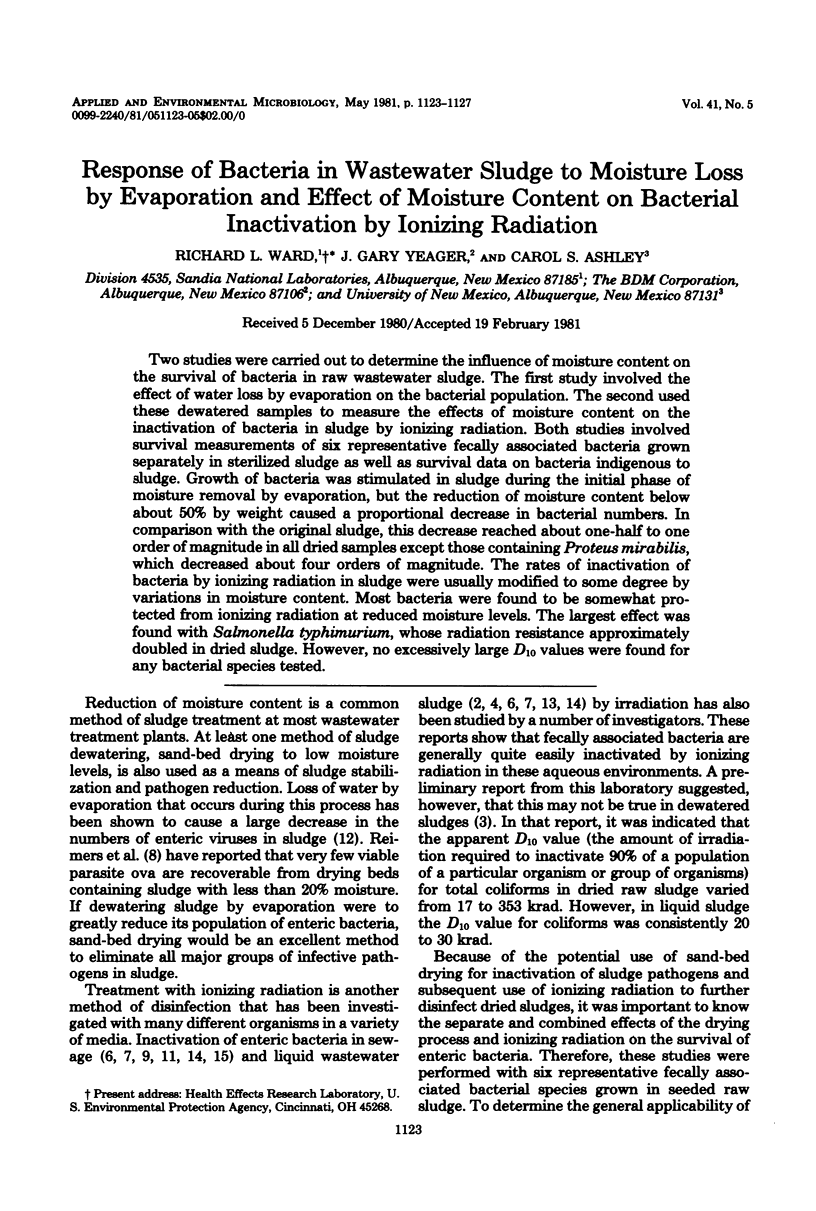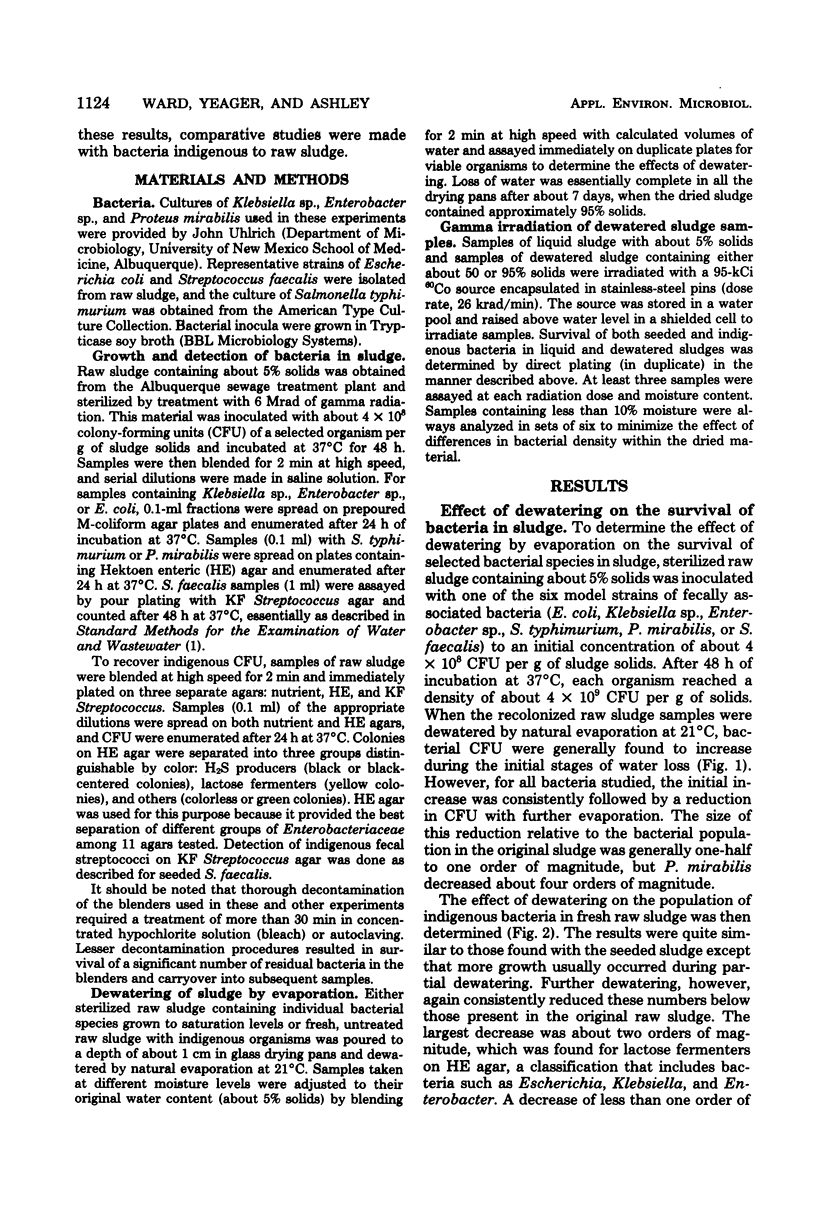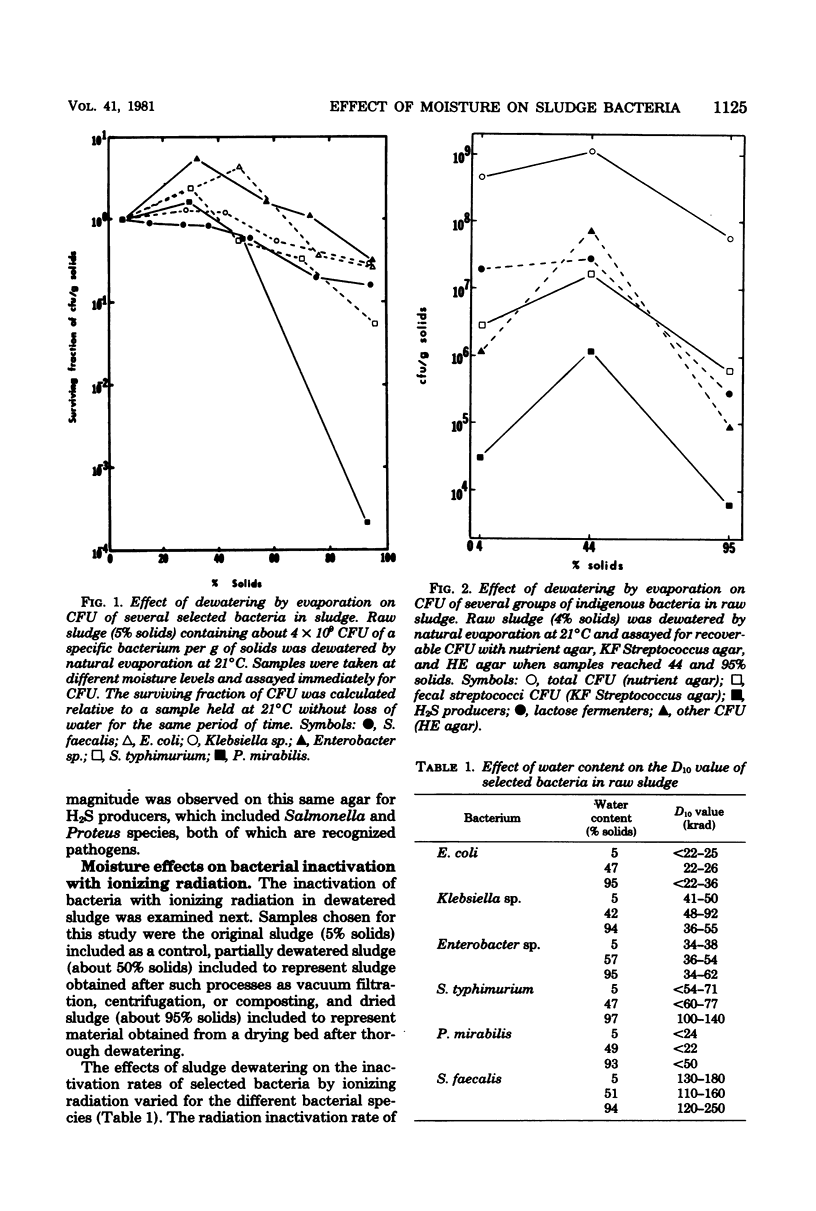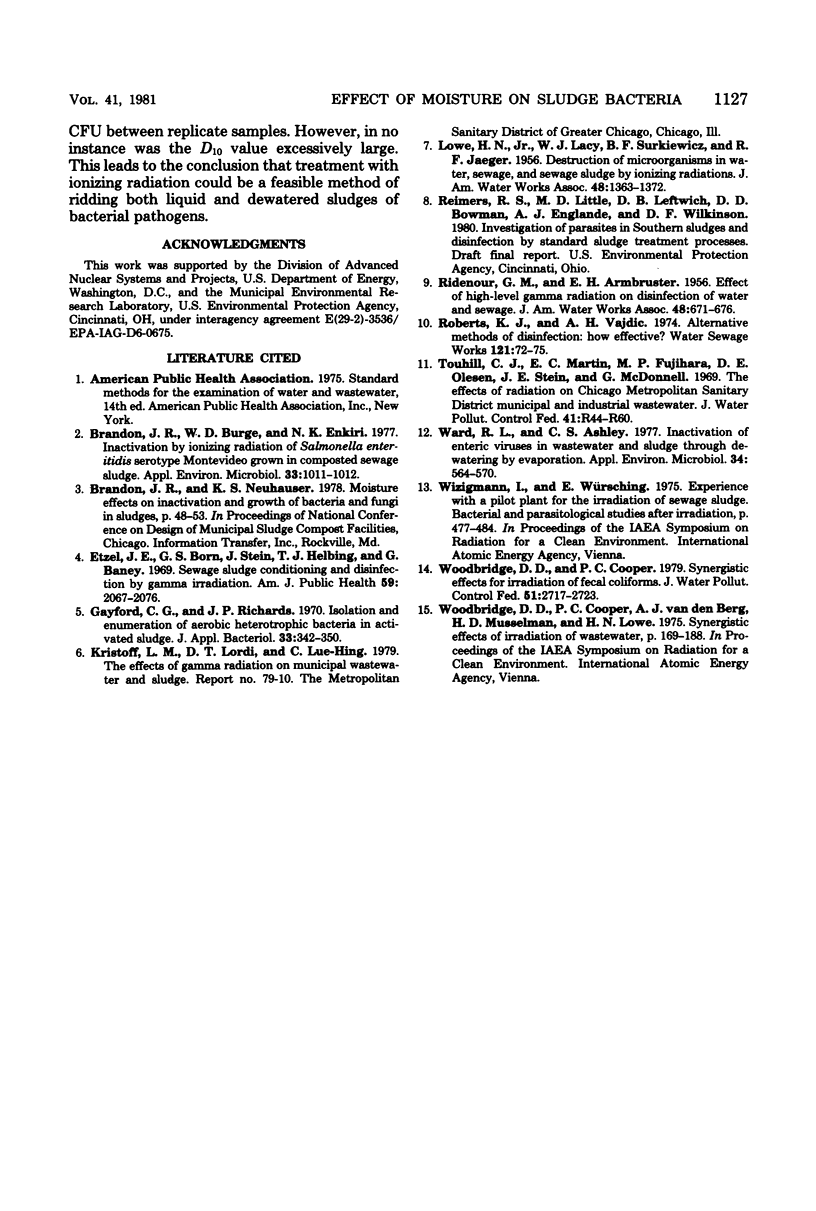Abstract
Two studies were carried out to determine the influence of moisture content of the survival of bacteria in raw wastewater sludge. The first study involved the effect of water loss by evaporation on the bacterial population. The second used these dewatered samples to measure the effects of moisture content on the inactivation of bacteria sludge by ionizing radiation. Both studies involved survival measurements of six representative fecally associated bacteria grown separately in sterilized sludge as well as survival data on bacteria indigenous to sludge. Growth of bacteria was stimulated in sludge during the initial phase of moisture removal by evaporation, but the reduction of moisture content below about 50% by weight caused a proportional decrease in bacterial numbers. In comparison with the original sludge, this decrease reached about one-half to one order of magnitude in all dried samples except those containing Proteus mirabilis, which decreased about four orders of magnitude. The rates of inactivation of bacteria by ionizing radiation in sludge were usually modified to some degrees by variations in moisture content. Most bacteria were found to be somewhat protected from ionizing radiation at reduced moisture levels. The largest effect was found with Salmonella typhimurium, whose radiation resistance approximately doubled in dried sludge. However, no excessively large D10 values were found for any bacterial species tested.
Full text
PDF




Selected References
These references are in PubMed. This may not be the complete list of references from this article.
- Brandon J. R., Burge W. D., Enkiri N. K. Inactivation by ionizing radiation of Salmonella enteritidis serotype montevideo grown in composed sewage sludge. Appl Environ Microbiol. 1977 Apr;33(4):1011–1012. doi: 10.1128/aem.33.4.1011-1012.1977. [DOI] [PMC free article] [PubMed] [Google Scholar]
- Etzel J. E., Born G. S., Stein J., Helbing T. J., Baney G. Sewage sludge conditioning and disinfection by gamma irradiation. Am J Public Health Nations Health. 1969 Nov;59(11):2067–2076. doi: 10.2105/ajph.59.11.2067. [DOI] [PMC free article] [PubMed] [Google Scholar]
- Gayford C. G., Richards J. P. Isolation and enumeration of aerobic heterotrophic bacteria in activated sludge. J Appl Bacteriol. 1970 Jun;33(2):342–350. doi: 10.1111/j.1365-2672.1970.tb02205.x. [DOI] [PubMed] [Google Scholar]
- Touhill C. J., Martin E. C., Fujihara M. P., Olesen D. E., Stein J. E., McDonnell G. The effects of radiation on Chicago Metropolitan Sanitary District municipal and industrial wastewaters. J Water Pollut Control Fed. 1969 Feb;41:R44–R60. [PubMed] [Google Scholar]
- Ward R. L., Ashley C. S. Inactivation of enteric viruses in wastewater sludge through dewatering by evaporation. Appl Environ Microbiol. 1977 Nov;34(5):564–570. doi: 10.1128/aem.34.5.564-570.1977. [DOI] [PMC free article] [PubMed] [Google Scholar]
- Woodbridge D. D., Cooper P. C. Synergistic effects for irradiation of fecal coliforms. J Water Pollut Control Fed. 1979 Nov;51(11):2717–2723. [PubMed] [Google Scholar]


